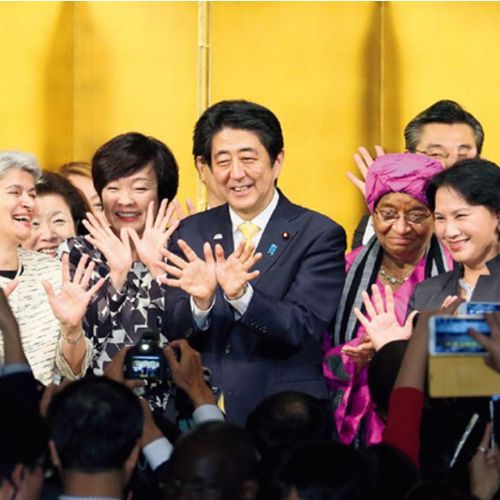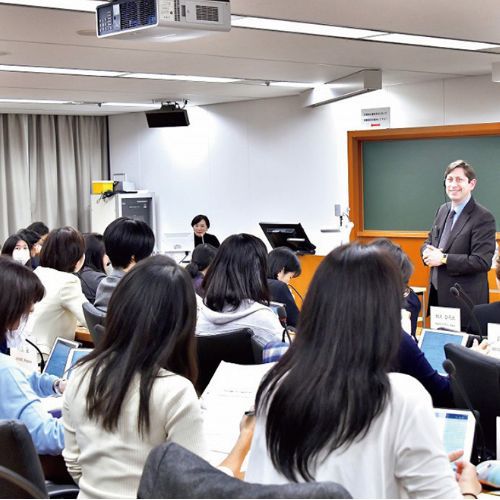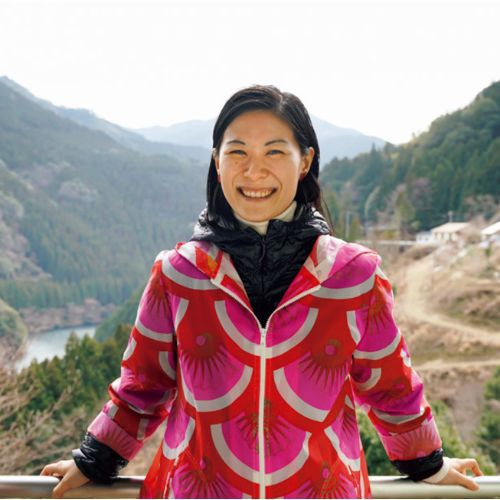A water treatment membrane developed by Toray, Japanese manufacturer of synthetic fibers, is benefiting desalinization facilities around the world. With fresh water in short supply globally, what contributions can be anticipated?
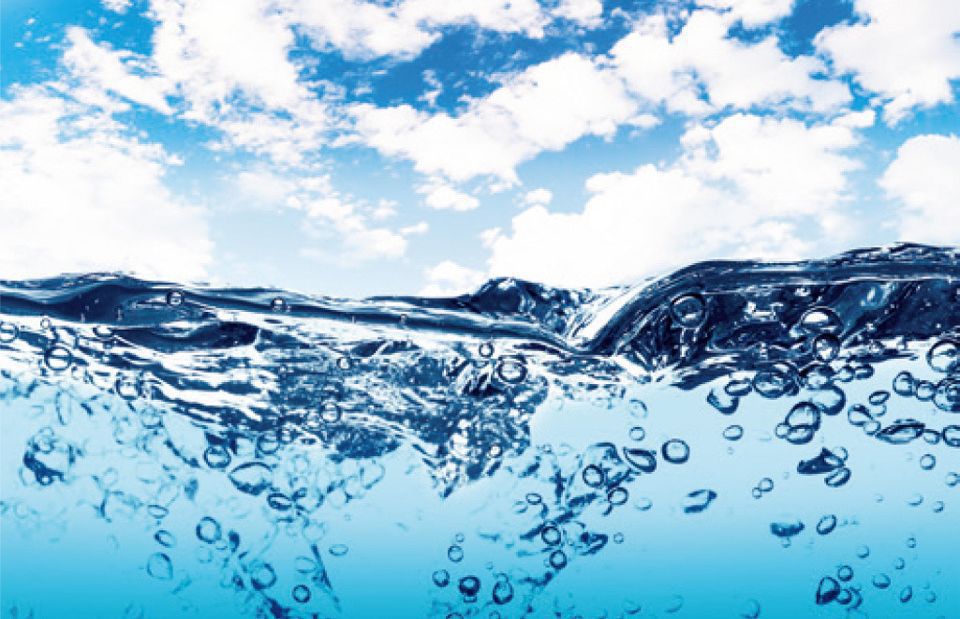

Although the Earth is called the “Water Planet,” only 2.5% is fresh water that can be used by humans, who have long dreamed of developing a practical desalinization technology.
Because of population growth, droughts due to global warming, and water pollution due to industrialization, the shortage of fresh water is becoming a serious concern in many countries. Increasingly, people are looking at the oceans, which hold 97.5% of the water on our planet. Methods for converting seawater into fresh water have long relied on evaporation, in which seawater is first evaporated and the steam then condensed into fresh water, but that requires tremendous energy, with the additional problem of carbon dioxide emissions.
Satoshi Shimoyama, general manager of Water Treatment Division of Toray Industries, Inc., takes a long-term view. “At the beginning of the 1960s, U.S. President Kennedy advocated research of desalinization as a national project, saying, ‘If we could ever competitively, at a cheap rate, get fresh water from salt water, that it would be in the long-range interests of humanity.’ Toray has directed attention to that idea, too. Putting our expertise in fibers to good use, we started researching the area from an early date.” Inspired by basic research started in the United States, Toray’s young engineers began in 1968 to develop a membrane filter called a “reverse osmosis membrane” (RO membrane). The resulting membrane treatment method, using that membrane, separates the salt from seawater by passing it through a membrane filter having minute pores only 0.6-0.8 nm in diameter, thus providing fresh water. Being less expensive and less energy-intensive than the conventional evaporation method, the membrane treatment method is environmentally friendly.
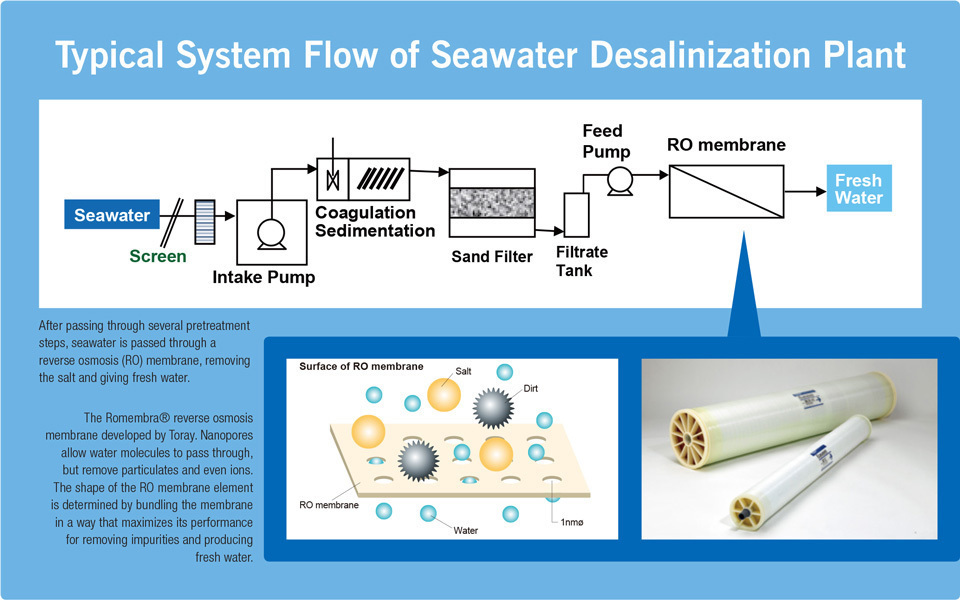
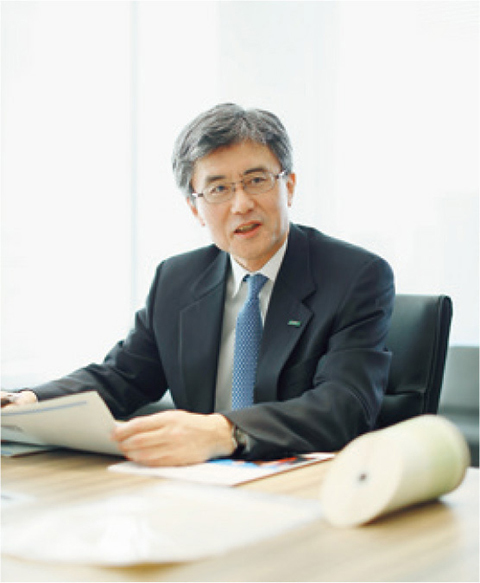
Satoshi Shimoyama, general manager of the Water Treatment Division. Upon entering Toray, he has served in global business activities, and since 2006 he has successfully expanded the water treatment membrane business around the world. He leads the Water Treatment Division since 2018.
Toray’s RO membrane has been introduced to 76 countries around the world. The cumulative amount of membranes shipped, if converted into water, is the equivalent of about 60 million tons of fresh water every day. That corresponds to the daily water requirements of 420 million people, making the technology particularly welcome to nations with dry climates in Africa and the Middle East, where it provides much-needed drinking water. Other versions of the same filtration technology are being used to reclaim sewage water and industrial wastewater, and to provide ultrapure water that is indispensable for manufacturing semiconductors. The company has developed other water treatment membranes in addition to the RO membrane, and offers suitable combinations tailored to local circumstances, such as the quality of the water source and the intended use of the recycled water. With many regional centers to provide production, sales, and technical services around the world, Toray has capabilities for replacing filters, assessing local water quality, and providing valuable training for local technicians.
Having made major contributions to this vital area, Toray sees another factor as absolutely essential for developing technology, as Shimoyama explains. “Desalinization is not something that Toray can do by itself. We depend on feedback from the plant operators and engineering firms that use our membranes. All the players in the field conscientiously strive to perfect the technology at every opportunity. At Toray, we look beyond the business opportunities, because we want to contribute to society through improving water processing technology in cooperation with enterprises throughout the world.”
By mobilizing leading-edge technology, perhaps the day will soon arrive when humans will no longer suffer from water shortages anywhere in the world.


























